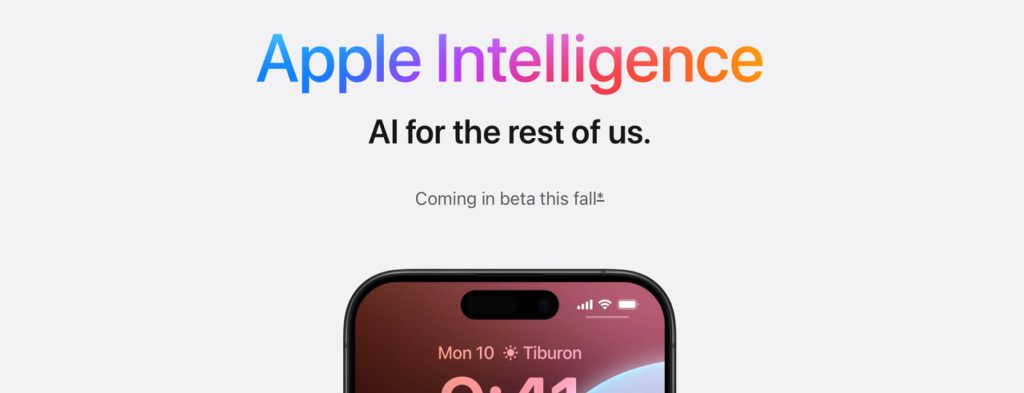What Is Persona Development?

A user persona is a fictional depiction of a particular user group that organizations employ to understand better the behaviors, wants, and motivations of their customers. It’s a thorough profile of a fictitious customer that firms develop after conducting significant research and data analysis. Demographics, personality traits, behavioral tendencies, and goals are all included in the persona. It aids organizations in better understanding their clients and developing goods and services that satisfy their requirements.
For organizations, especially those in the digital arena, persona development is a crucial tool. Businesses can better understand their consumers’ requirements and problems by creating user personas. Better communication, better product design, and ultimately increased customer happiness can result from this understanding. Businesses can create products that are suited to their specific needs by using user persona development to generate empathy with their customers.
User personas are frequently used in product development, marketing, and user experience design. They assist companies in developing customer-centered solutions that address the particular requirements of their clients. User persona development also assists organizations in understanding the behavior of their customers, including how they interact with their goods and services, their preferred communication methods, and their pain areas. With this knowledge, firms can build solutions that are more likely to be successful in the market and make data-driven decisions.
The Importance of Persona Development for Companies

For a variety of reasons, creating user personas is crucial for organizations. Here are some of the most significant ones:
Understanding consumer requirements and preferences
By creating user personas, businesses can better understand the needs and preferences of their customers. Businesses can develop in-depth profiles of their target audience by investigating and analyzing data on the behavior of their clients. These personas can assist firms in comprehending the wants, driving forces, and objectives of their target market, which is crucial for creating goods and services that satisfy those demands.
Customer empathy building
User personas assist firms in developing customer empathy. Businesses can put themselves in their consumers’ shoes and comprehend their pain areas, frustrations, and ambitions by creating extensive profiles of their customers. For products and services to appeal to clients and address their concerns, empathy is crucial.
Better product and service design
This is made possible by user personas. Businesses can create solutions that are suited to the needs of their clients by comprehending their needs and preferences. User personas assist organizations in identifying market gaps and creating creative solutions to fill those gaps.
Communication improvement
User personas assist firms in improving communication with their clients. Businesses can develop more effective communication strategies by understanding their customers’ preferences for communication channels and messaging. User personas also assist organizations in customizing their messaging to the requirements of their target audience, which is crucial for establishing credibility and trust.
In conclusion, user persona building is essential for organizations to comprehend their consumers’ demands, foster empathy, create better products and services, and enhance communication. Businesses can use extensive profiles of their target audience to make data-driven decisions that increase customer pleasure, loyalty, and retention.
How to Create User Personas:
Steps and Recommended Practices
A methodical approach and a number of best practices are necessary for creating user personas. Here are the steps and recommended practices for creating user personas:
Research
Research is the initial stage in creating user personas. Data from surveys, interviews, focus groups, and analytics should all be included in this study, along with quantitative data. Gathering as much information as you can about your target market is the objective.
Identify customer patterns.
After gathering data, the following step is to look for patterns. Look for similarities in demographics, behavioral tendencies, objectives, and pain points. You can make user personas that are more precise and lifelike by using these principles.
Build personas
Develop a collection of user personas based on your study and the trends you’ve found. Each persona should be a thorough description of a potential consumer that includes their goals, behavior patterns, and pain points.
Test and validate.
After you’ve established your user personas, it’s critical to test and validate them. User testing, surveys, and stakeholder feedback are all examples of this. Making sure your user personas appropriately reflect your target demographic is the aim.
Personas should be used to guide corporate decisions. Use them to create better goods and services, enhance communication plans, and make data-driven decisions that increase client retention and happiness.
Some guidelines for creating user personas.
- Participate in the persona creation process with stakeholders from around the organization.
- To create more accurate personas, combine qualitative and quantitative data.
- Make your personalities more relevant and believable by using real names and pictures to create empathy and narrative.
- Validate your personas through stakeholder feedback and user testing.
- As your company grows, be sure to regularly update and improve your personas.
In conclusion, creating personas assist organizations. Businesses can produce accurate and realistic user personas that increase customer happiness and retention by adhering to these guidelines and best practices.
Building Client Empathy with User Personas
User personas assist organizations in developing empathy with their customers, which is one of their most important advantages. In order to produce goods and services that satisfy customers’ requirements, empathy—the capacity to comprehend and share another person’s feelings—is essential.
User personas can be used by organizations to develop empathy with their clients in the following ways:
Customize message
By employing user personas, organizations can generate customized messaging that precisely addresses the needs and pain points of their target audience. Customized messaging enables organizations to engage with their clients on a deeper emotional level, fostering empathy and trust.
Design for real people
User personas help companies create goods and services for actual customers rather than a general market. Companies can develop more compassionate and human-centered solutions by designing for actual people with real needs and ambitions.
Understanding client pain points is made possible by the use of user personas. Businesses can build empathy and trust with their customers by identifying these pain points and developing solutions that directly address them.
User personas assist firms in giving user comments and preferences priority. Businesses can demonstrate to their customers that they value their opinions and are committed to developing solutions that address their needs by giving user feedback a top priority.
Ultimately, user personas assist firms in fostering a customer-centric culture. Businesses can foster a culture of empathy and customer care by concentrating on the needs and aspirations of their customers, which will increase customer happiness and retention.
In conclusion, user personas are an effective tool for cultivating empathy with customers. Businesses can customize communications, build for actual people, comprehend pain spots, give user input top priority, and promote a customer-centric culture by employing user personas. These procedures produce more sympathetic and human-centered solutions as well as improved levels of client pleasure, loyalty, and retention.
User Personas to Create Better Products and Services
For creating better products and services, user personas are a crucial tool. Businesses can more successfully develop solutions that fulfill the demands of their consumers by understanding their needs, objectives, and pain points. User personas can assist companies in creating goods and services that are better in the following ways:
Identify market opportunities.
By exposing unmet demands or underserved client segments, user personas can assist firms in identifying market gaps. Businesses can gain a competitive advantage by detecting these gaps and developing solutions that fill them.
Prioritize features.
Based on the demands and objectives of your consumers use persona development. Businesses can develop more effective and efficient solutions by giving features that are in line with their customers’ needs priority.
Identifying problems to solve
By understanding the problems and difficulties users have, user personas assist organizations in enhancing the user experience. Businesses can give their customers a better user-friendly and intuitive experience by solving these problems and issues.
Clarity
User personas give organizations a clear grasp of the wants and objectives of their customers, allowing them to test and iterate their products and services. Businesses can develop solutions that over time better fit the demands of their customers by testing and iterating based on user feedback.
Boost brand loyalty
Lastly, user personas assist organizations in developing solutions that are in line with the values and objectives of their target market. Businesses can develop a devoted customer base that is more inclined to spread the word about their products by producing goods and services that people like.
In conclusion, persona development is an effective tool for creating better goods and services. Businesses can develop solutions that better satisfy the needs of their customers and have a greater chance of success in the market by identifying market gaps, prioritizing features, enhancing the user experience, testing and iterating, and developing brand loyalty.
Enhancing User Persona Communication

User personas are a crucial tool for enhancing consumer and corporate communication. Businesses can develop more persuasive communication tactics that connect with their target audience by understanding the wants, objectives, and pain points of their customers. User personas can assist businesses in a number of ways to enhance communication, including:
Speak your customers’ language.
User personas can assist organizations in speaking their customers’ language by finding the words and phrases that their consumers use to communicate their demands and pain points. Businesses can engage with their customers on a more personal level and foster trust by integrating this language into their communication methods.
Choose the best channels.
User personas assist firms in selecting the best channels to connect with their clients. Businesses can develop communication strategies that effectively reach their target audience by analyzing where their customers spend their time online and offline.
Generate pertinent content.
User personas assist businesses in producing pertinent material that speaks directly to the wants and objectives of their customers. Businesses can develop trust and authority in their industry by producing content that answers the problems and issues that their consumers face.
Adapt message.
User personas assist firms in adapting their messaging to various customer segments. Businesses can more effectively develop messaging that connects with each client group by understanding the particular requirements and objectives of each group.
Enhance customer service
User personas help businesses improve their customer service by letting them better understand the requirements and problems of their customers. Businesses can improve the customer service experience and foster trust and loyalty by addressing these requirements and pain points directly.
In conclusion, personas development is a crucial tool for enhancing consumer communication between firms. Businesses can develop more successful communication strategies that foster customer trust, loyalty, and happiness by speaking their consumers’ language, selecting the appropriate channels, producing pertinent material, customizing messaging, and enhancing customer service.
The Advantages of Utilizing User Personas for Client Satisfaction, Loyalty, and Retention

In general, user personas are a crucial tool for organizations to understand their clients’ wants and develop goods and services that satisfy them. Businesses can improve customer happiness, loyalty, and retention by adopting user personas to develop empathy with their consumers, design better products, and improve communication. Here are some particular advantages of employing user personas:
User personas help businesses develop more tailored experiences for their customers by understanding their wants, goals, and pain points. Businesses can give their customers a more enjoyable and rewarding experience by customizing their offerings, services, and communication methods for each set of clients.
Improved loyalty
By developing goods and services that better satisfy customers’ wants and objectives, user personas assist organizations in increasing customer loyalty. Businesses may create a more favorable and beneficial experience that entices customers to return and recommend their products to others by solving the problems and issues that their customers face.
Increased retention
By identifying and addressing the reasons why customers leave a brand, user personas assist firms in increasing customer retention. Businesses may develop solutions that keep consumers coming back and lower churn by knowing the demands and pain points of their customers.
Increased efficiency
User personas assist organizations in streamlining operations and developing more effective solutions. Businesses can design solutions that are more effective and efficient, ultimately saving time and resources, by giving priority to features and solutions that correspond with their customers’ aspirations and objectives.
Improved customer insights
User personas give firms better customer insights that guide strategy and decision-making. Businesses can develop solutions that are in line with the values and preferences of their consumers by first knowing their wants, goals, and pain points. This will help them succeed in the market.
In conclusion, persona development is essential for companies looking to increase client retention, loyalty, and satisfaction. Businesses can develop goods and services that better suit the demands of their customers and enjoy higher market success by developing more personalized experiences, increasing customer loyalty, enhancing retention, increasing efficiency, and acquiring better customer insights.
Excellent Persona Development Examples for App Design.

And finally, here are some examples of how persona development can work, with real-world examples:
User personas have been used to direct the design and development processes for many popular apps. These are some examples of excellent app experiences that have been developed using user personas:
Airbnb
Airbnb developed a number of user personas, including “The Solo Traveler,” “The Vacationing Family,” and “The Business Traveler.” Each persona represented a different kind of Airbnb user with particular requirements and goals. For instance, “The Vacationing Family” persona emphasized the necessity of family-friendly amenities and comfortable lodgings, while “The Business Traveler” persona emphasized the importance of a convenient and professional experience.
Spotify
Spotify developed a number of user profiles, including “The Active Listener,” “The Music Aficionado,” and “The Casual Listener.” Each persona represents a distinct type of Spotify user with distinct musical tastes and listening habits. For instance, “The Active Listener” persona emphasized the significance of peppy, high-energy music for workout routines, while “The Music Aficionado” persona emphasized the need for carefully selected playlists and deep cuts for music enthusiasts.
Uber
“The Urban Commuter,” “The Nightlife Seeker,” and “The Business Traveler” are just a few of the user personas that Uber has developed. Each persona represented a different kind of Uber user with certain wants and goals for transportation. For instance, “The Urban Commuter” persona emphasized the significance of dependable and economical transportation for everyday commutes, while “The Nightlife Seeker” persona emphasized the need for convenient and safe transportation during late-night adventures.
Duolingo
The “Language Enthusiast,” “The Busy Professional,” and “The Global Traveler” are just a few of the user personas that Duolingo has developed. Each persona represented a distinct category of Duolingo users, each with its motivations and learning objectives. For instance, “The Busy Professional” persona emphasized the need for time-effective language learning activities, while “The Global Traveler” persona emphasized the necessity of having practical and conversational language abilities for travel.
Headspace
Headspace developed various user personas, such as “The Busy Parent,” “The Stressed Student,” and “The High-Performance Athlete.” Each persona represented a distinct category of Headspace users, each with its own set of mindfulness objectives and driving forces. For instance, “The Stressed Student” persona emphasized the significance of lowering tension and enhancing attention for academic success, while “The High-Performance Athlete” persona emphasized the necessity of mental preparation and focus for athletic performance.
These examples show how user personas can be applied to the development of extremely popular apps that satisfy the requirements and objectives of their users. App developers can learn a lot about the motivations, problems, and preferences of their customers by developing realistic and thorough personas that represent a wide spectrum of consumers. These findings can then be used to design a more interesting and rewarding user experience that boosts market success.
Why User Personas are a Must-Have for Companies

Understanding your clients is more crucial than ever in today’s fiercely competitive markets. Persona development is therefore essential for firms of all sizes and in all sectors. You can learn a lot about the needs, objectives, motivations, and pain points of your target clients by constructing a fictionalized version of them. This data may then be utilized to develop goods and services that satisfy their requirements, develop empathy for your consumers, enhance communication, and boost customer happiness, loyalty, and retention.
User personas paint a clear picture of who your customers are and what they desire. They assist you in identifying the particular difficulties and problems that each client group faces so that you can develop solutions to these problems. Understanding the demands and objectives of your clients can help you develop goods and services that are in line with their standards and tastes, which will boost your market share.
Also, by speaking their language and selecting the appropriate methods to contact them, user personas assist firms in improving client communication. As a result, customers feel valued and understood by the company, which improves engagement, trust, and loyalty.
In conclusion, personas development is an essential tool for companies looking to better understand their customers and develop products that cater to their demands. By employing user personas, businesses may improve communication, design better products and services, foster empathy, and boost customer satisfaction, loyalty, and retention. Considering these advantages, it is evident that persona development is essential for companies of all sizes and sectors.
How we can help
Here at Blue Whale Apps, we don’t just build apps, we offer a complete end-to-end solution for any business that is looking to develop an app for their brand. That includes market and user research, and persona development, to ensure that the final product is perfectly designed for its target market, which will hugely increase the chances of a successful product launch.
If you would like to discuss your project with one of our experts, please book a free consolation call and we will be happy to help.






